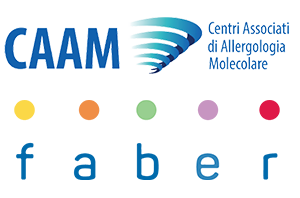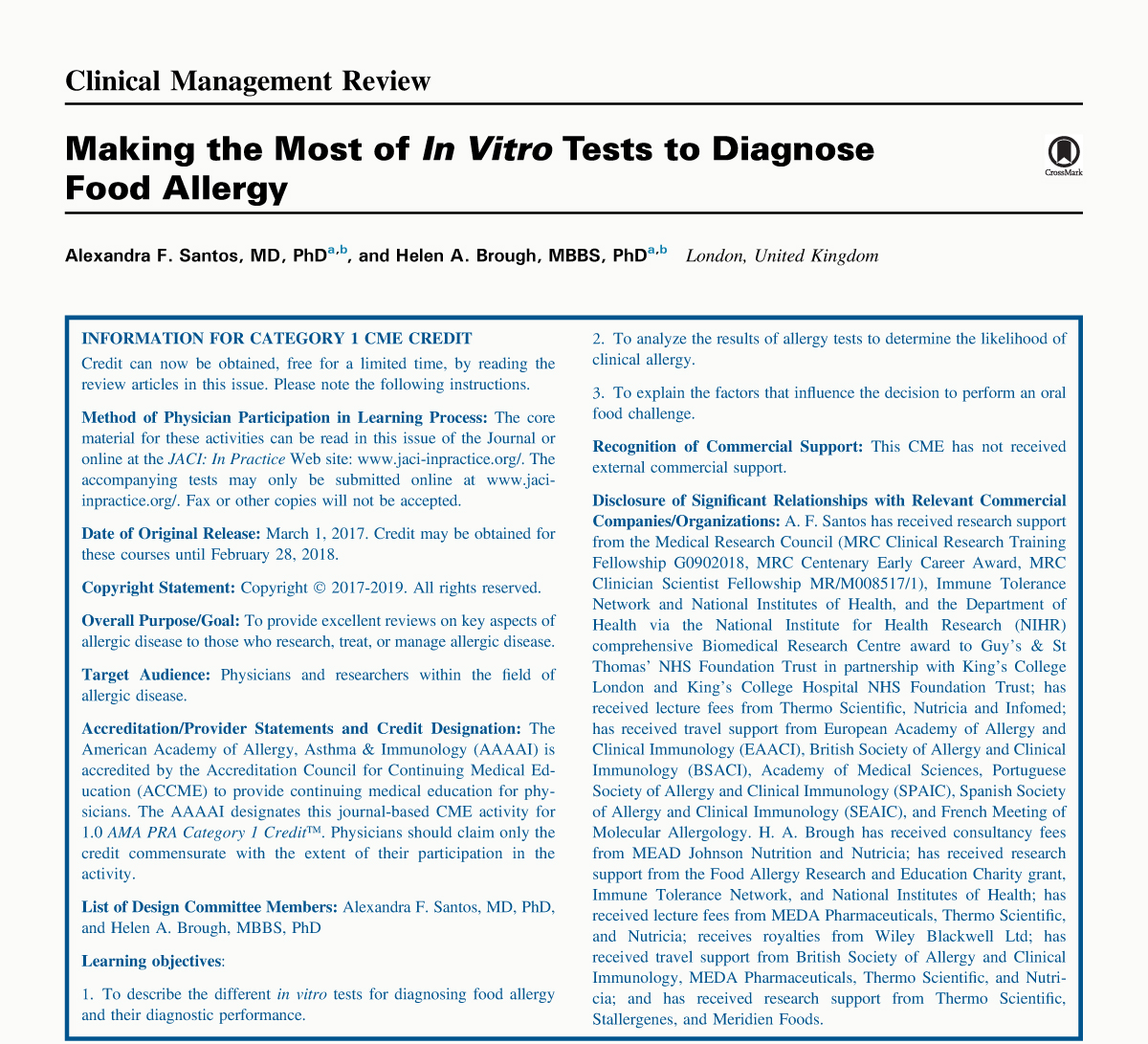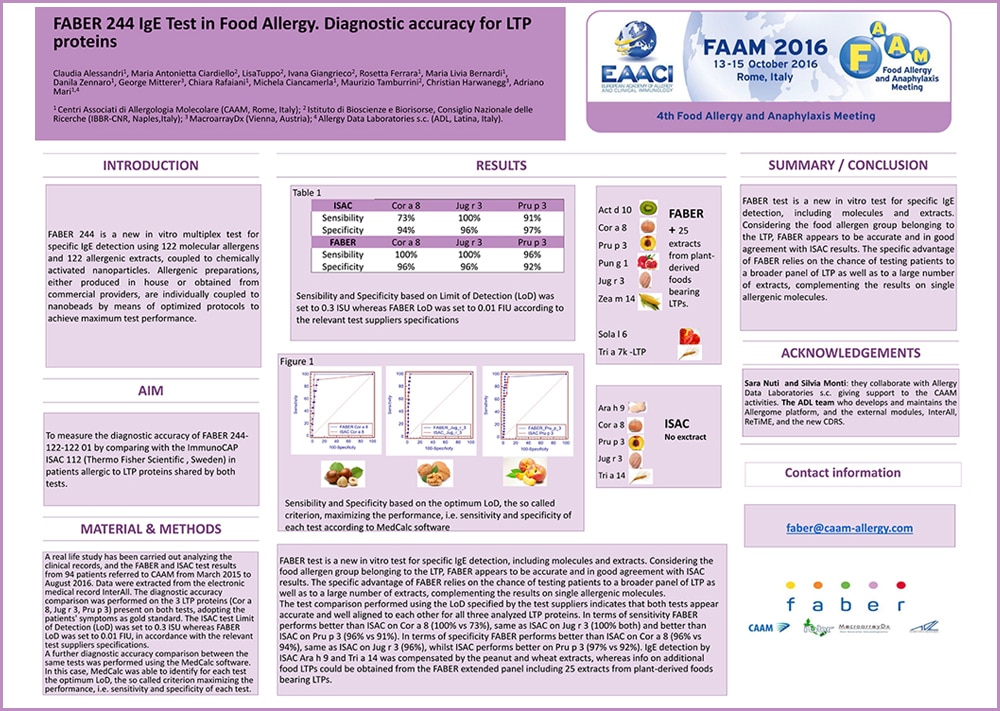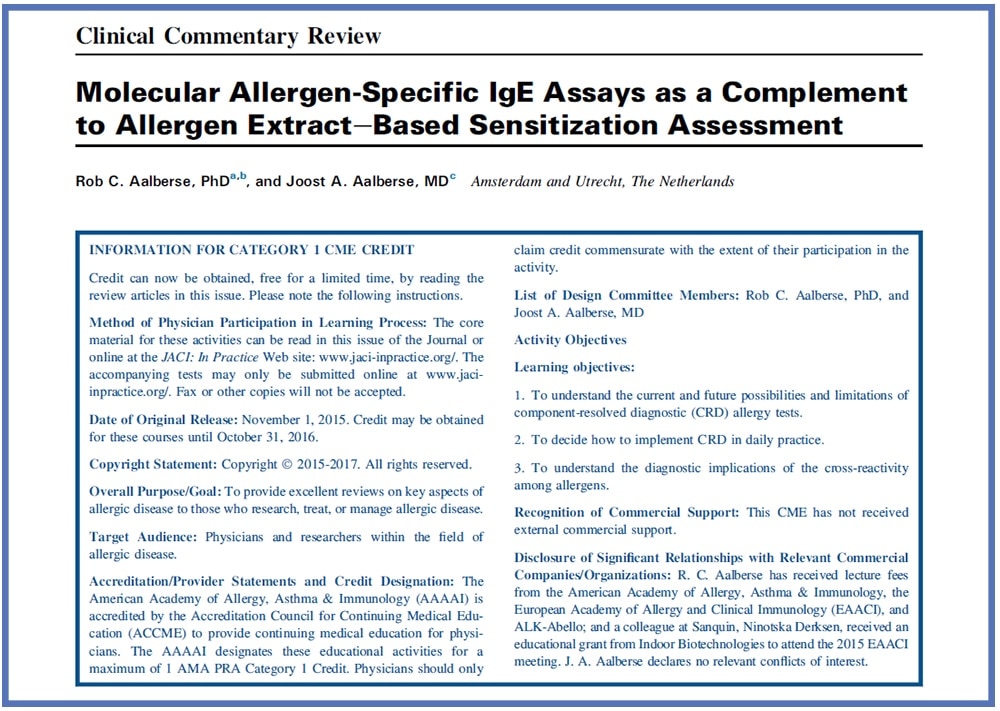最新一代的免疫球蛋白E (IgE)過敏測試—CAAM Faber!
第一代過敏血液測試在1970年代研發,將過敏原提取物與固體結合,然後加入患者的血清,再用標記放射性的抗IgE抗體測量,只可在有專門裝備的實驗室進行。
第二代過敏血液測試方法,結合酶子和抗IgE抗體而變色,或使用被特定波長的光激發時發螢光的分子。
過敏血液測試的最新發展包括使用分子過敏原。最新一代IgE過敏測試CAAM-Faber經過15年的研究,測試釋放IgE而引起過敏反應的致敏原分子,從而大大減低假陽性的測試結果。
多重檢測(multiplex)是過敏血液測試的另一項最新發展,需要用作測試的過敏原份量大大減少,血液樣本能用作測試更多過敏原,由於反應區很小,能精確測試IgE總量高達45,000 IU/ml的血清。
CAAM-Faber 研究實驗室和技術人員
過敏測試由意大利CAAM尖端科研團隊研發、包括過敏科專科醫生、分子生物學家以及生物信息學專家。 創始人 Dr. Adriano Mari 是過敏原分子研究的先驅。 自 1983 年以來,Dr. Mari和 CAAM 的研究團隊已發表超過 240 種醫學期刊,並繼續過敏原分子的研究。
為何最新一代過敏測試CAAM Faber較適合濕疹患者?
濕疹患者較為適合進行血液測試,因為若果患者進行皮膚點刺測試,他們的皮膚狀態會影響到測試的結果,從而減低準確性。
食物當中的致敏原分子與體內的IgE免疫抗體結合,引發肥大細胞釋放組織胺,導致過敏反應。以花生為例,花生有17種不同的致敏原分子,當中較大機會引發嚴重過敏反應的致敏原包括: Ara h 2及Ara h 6,而其他致敏原分子,例如Ara h8所引發的過敏反應風險則較低,因此進行致敏原分子測試對於濕疹患者的過敏反應風險評估有很大的幫助。
其實,過敏原分子當中有600多種會引起過敏反應,其中300多種爲黴菌及只限於某些國家及地區,而最新一代IgE過敏測試CAAM Faber能夠檢驗出200多種已篩選的致敏原,對於濕疹患者找出致敏源頭已經相當全面及足夠。
Latest generation IgE Component allergy test - CAAM FABER
The first generation of blood allergy test was invented in the 1970s. However, developing a blood test for allergies was challenging due to the small quantities of specific IgE antibodies found in the blood. In the first generation of allergy tests, allergenic extracts were bound to a solid phase and then incubated with a patient’s serum. IgE binding was detected using radioactive antibodies against anti-IgE. The quantity of the IgE can be determined by detecting the radioactivity. These RAST tests are only possible in specially equipped laboratories due to the use of radioactive materials.
The second generation generation tests involve measuring the degree of colour or the strength of the fluorescence to determine the quantity of bound anti-IgE antibodies. In this case, an enzyme molecule bound to anti-IgE antibodies can catalyse a change in colour, or a molecule that fluoresces when excited by a specific wavelength of light can be used. Quantification of bound anti-IgE antibodies can be determined by measuring the colour change or fluorescence strength
Recent developments in allergy blood testing include the use of molecular allergens. After 15 years of research, Faber, the latest generation of IgE allergy test, has screened out these non-allergenic molecular proteins. Thus, only the allergen molecules that release IgE and cause allergic reactions are tested, thereby greatly reducing false positive test results. Therefore, the latest generation has taken out those non-allergenic proteins, improving the overall test accuracy. Another recent development is the multiplex assay. The previous tests required a lot of blood samples and can easily bind with non-specific IgE, leading to false positive results. However, with the use of multiplex assay, the amount of allergens needed can be greatly reduced, thus lowering the cost of the test. It also allows more allergens to be tested with a given amount of blood sample. Faber allergy test employs nanotechnology and the latest generation multiplex assay, such that it can accurately measure total IgE level up to 45,000 IU/ml in blood serum
Why are eczema patients more fitted for CAAM Faber allergy test?
Eczema patients are more suitable for blood tests because the pre-existing eczema skin condition might affect and reduce the accuracy of a skin prick test.
For food allergy, allergens in food bind with IgE antibodies in blood, triggering the release of histamine by mast cells, causing allergic reactions. Taking peanut as an example, peanut has 17 different allergen molecules. Among which allergen molecules with a greater chance of causing severe allergic reactions include: Ara h 2 and Ara h 6. Other molecule such as Ara h 8 has a low risk triggering an allergic reaction. Therefore, allergen molecular test is very helpful for risk assessment of allergic reactions in patients with eczema.
In fact, there are over 600 allergens that can cause allergic reactions, of which around 300 are molds that can only be found in specific countries and regions. The latest IgE allergy test Faber can detect more than 200 clinically identified allergens, and it is already comprehensive and sufficient enough for eczema patients.
Academic Literature
The most recent academic literature indicates “Molecular Allergens” is an accurate method in food allergy tests.

 致敏原列表
閱讀 PDF
致敏原列表
閱讀 PDF
 閱讀 PDF
閱讀 PDF
 閱讀 PDF
閱讀 PDF
 閱讀 PDF
閱讀 PDF